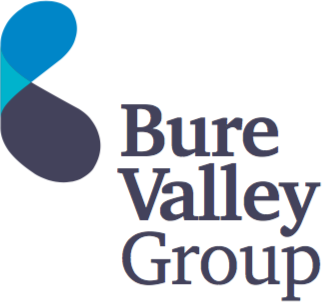The internet has undergone rapid evolution since its inception. In 1993, there were only 130 websites in the world. Three years later, this had grown to 100,000. Today, in 2024, estimates place the total at over 1,000,000,000. The underlying “architecture” of the internet has also changed. Initially, “Web 1.0” dominated the landscape.
Since then, there have been two more “phases” – Web 2.0 and Web 3.0. Below, our 2024 Industry Report outlines the latest web landscape for investors. Here, we highlight the Web 3.0 global market overview, trends, established players, rising stars, opportunities and risks for investors to consider as they consider Web 3.0 assets for their portfolios.
Market Overview: Web 3.0
Web 3.0 is characterised by openness, transparency and greater control for individual users – especially regarding their online data. In 2021, the global market capitalisation for Web 3.0 stood at USD 1.86 Billion. By 2030, it is expected to reach USD 15.9 Billion, representing a compound annual growth rate (CAGR) of 42.99%.
The market is vast and can be segmented in multiple ways. By End-use, banking, financial services and insurance (BFSI) is making increasing use of Web 3.0 technology. Other notable verticals include pharmaceuticals, IT & telecom and retail. By “Type”, Web 3.0 can be divided into private, public (government service dominated) and hybrid. By application, the technology has many uses, including smart contracts, non-fungible tokens (NFTs) and decentralised finance (DeFi).
Key Features, benefits and trends
In the 1990s, Web 1.0 was built primarily on HTML, featuring static web pages and only a few content writers. By the 2000s, Web 2.0 had emerged. Facebook and Google had their IPOs, allowing users to expand their online interactivity and content creation.
Mobile devices and social media proliferated, yet data control remained largely in the hands of a handful of tech giants. By the 2010s, new technologies were birthing Web 3.0, sparking hopes that the internet would finally achieve (and exceed) Tim Berners-Lee’s decentralised vision of the “Semantic Web” in 2001. Web 3.0 is based on open-source software, enabling it to be “trustless” and “permissionless”. Information is based in multiple locations rather than in large databases of tech giants, creating a decentralised network. Computers are also far more powerful – leveraging innovations in machine learning, artificial intelligence (AI) and blockchain to power applications.
One key driver behind rising Web 3.0 demand is a growing need for decentralised tech and apps. Web 3.0 is arguably more secure than previous models via its distributed ledger technologies, mitigating single points of failure. With growing concerns about cyber attacks, privacy infringements, and data breaches, Web 3.0 offers users greater peace of mind and sovereignty over their data. Firms can also enhance their operational efficiency and lower production costs by eliminating the need for intermediaries (using smart contracts). “Token economies” can also enhance brand loyalty by encouraging user participation.
Risks & constraints
Web 3.0 is underpinned by rapidly evolving technologies, such as AI, which are currently the target of changing regulatory viewpoints. For instance, the UK is still deliberating its initial proposals on AI governance, and cross-border regulatory standards are not yet established. Digital assets in Web 3.0 are not universally classified, creating legal uncertainty. Smart contracts, for example, are growing in popularity but have no global enforceability.
Governance structures within Web 3.0 continue to develop, such as decentralised autonomous organisations (DAOs). Sometimes, these can be vulnerable if there are errors or flaws in the code. Blockchain technology also continues to face the issue of limited scalability, inhibiting mass adoption due to delays and costs (e.g. high crypto processing times and fees). Investors must be mindful of such risks when conducting their due diligence on Web 3.0 opportunities, scrutinising founders’ mitigation plans accordingly.
Key players and new entrants
Intriguingly, many Web 3.0 providers are “tech giants” such as Microsoft (cloud provider), IBM (solution provider) and AWS (service provider). The large players seem to recognise the threat that Web 3.0 poses to their business models and are trying to integrate it into their structures and processes, seeking a “marriage” between Webs 2.0 and 3.0 (as Google Cloud’s James Tromans put it).
However, there can be little doubt that the architectures of Webs 2.0 and 3.0 are deeply unaligned, leaving space for exciting new entrants to internet markets. One interesting UK case study is Arkis, a new DeFi broker born in London. The company is currently at the pre-seed stage, enjoying a recent $2.3m funding injection in February 2024. Arkis focuses specifically on enhancing capital efficiency for traders, letting them pool margins whilst reducing over-collateralisation constraints.
Another UK startup is BVNK, a next-generation payments platform for businesses. Also born in London, the company’s last funding round (Series A) secured $42m from investors to facilitate its mission to provide a complete platform for launching stablecoin payments. BVNK has made significant progress in aiding global settlement, helping some customers to reduce their merchant processing by 4-5 days to just a few hours.
Invitation
If you are interested in expanding your portfolio into these kinds of exciting spheres of investing, then we invite you to get in touch with us here at Bure Valley and consider joining our exclusive investor network:
+44 160 334 0827


